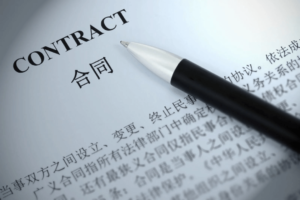The process of protecting your designs in China is more straightforward than you may think, and are important for business purposes outside of and inside the China market.
This article explores Chinese design patent applications, the recent amendment to the patent law in China, and how design patents in China contribute to protecting innovative industrial designs. It also discusses what impact the updated patent law in China has on design patents and how you can use a design patent in China as a cost-effective tool to stop the spread of unpatentable designs worldwide.
Table of Contents
ToggleRegistrable designs and the new Patent Law amendment: 10 years to 15 years
China and China National Intellectual Property Administration CNIPA protect designs under its Patent Law. New designs, the shape, and patterns, or a combination of colors, shapes, line drawings, and patterns that have an aesthetic appeal and can be applied to an industrial setting may become patentable.
Design patents can protect a new design, in both two-dimensional and three-dimensional designs.
On 1 June 2021, the current patent law in Mainland China, the fourth Patent Law amendment, came into force, intensifying patent protection, promoting patent exploitation and employment, and improving the patent protection system.
From now on, according to the fourth amendment to the patent law, design patents are protected for 15 years instead of 10 years.

The application process and configuration of a design
Design patent applications are relatively affordable and straightforward, provided the applicant submits drawings or pictures and a brief description of the design that encompasses its essential features. What about the formal requirements for a design patent application? The existing design drawings or pictures of the design should clearly show the top, bottom, side, back, left, and right views, as well as a perspective view.
The specification and drawings of the design will be used by the courts and administrative enforcement authorities to define the scope of protection.
An application for a design process takes approximately four to eight months.
The fourth amendment to China’s Patent Law and the new law protects the whole or partial shape or pattern of a product (protection of partial designs) or a combination thereof, as well as a combination of colors related to the whole or partial pattern (combination of the color). Partial designs are now protected more comprehensively due to the extended protection.
Chinese law previously protected only the design of whole products, which meant that innovative design features within the overall design, which are easily copied by patchwork and replacement, were not protected. As a result, it wasn’t easy to obtain effective protection for designs.
With the addition of ‘partial design’ protection in the Patent Law, applicants will no longer need to file multiple separate applications to protect different product configurations. The scope of the protection is increased, reducing your company’s patent costs.
Patent rights and violations
If your design patent is granted, you will have the exclusive rights as no one else may manufacture, sell, import, or use products incorporating the patented design for business or production purposes without the patent owner’s consent.
If a design is infringed and there is a patent infringement, the owner of the product design can seek injunctions, damages, and other declarations from the Court.
China calculates damages based on the following approaches: losses to the patent owner, illegal profits that the infringer acquired, or multiple patent royalties.
In the new Patent Law and the new regulations of the patent law in Article 71(2), the amount of compensation one can receive if there are infringement disputes and someone infringes on a patent right has increased from the previous range of 10,000 – 1.000.000 RMB to 30,000 – 5.000.000 RMB in the updated Patent Law.
A five-fold increase in compensation is a powerful deterrent against willful or persistent patent infringers. It affects Chinese patent litigation practices significantly. If there is infringement in China, damages, and compensation are based on the following: losses to the patent owner, illegal profits that the infringer acquired, or a multiple of patent royalties.

IP Protection: Get your designs patented and registered with customs in China to protect them
Why is the date of filing the design important? The earliest filing for design protection in China will prevent pirates from taking advantage of the “first to file” principle to exploit designs. So the date of application and he/she or the entity that first files the application are important when it comes to Chinese design patents.
Invalidating a design patent can be costly, and filing early in China is best to avoid it. It will be better to do the filing before the design is made public during the early stages of the product development process.
It is also possible for rights owners to register a design patent with Chinese customs to stop the infringing designs from leaving China and entering other markets. Infringed intellectual property rights cannot be exported or imported to or from China under Chinese law. . Design patentees can register their design patents with the Beijing General Administration of Customs.
The customs registration process takes approximately a month and is another effective tool to combat infringements.
China’s fourth Patent Law amendment: Establishing domestic priority
Another important change in the Chinese patent law is the domestic priority. What do the changes in the Chinese design Patent Law imply? According to the Chinese legislature and China’s fourth Patent Law amendment, you can now enjoy a right of priority if you apply for a patent for the same invention within six months from the filing date or the date you file your first design patent application in China.
Previously, domestic priority was only applicable to inventions or utility models. Under the newly amended law, domestic priority may also be enjoyed in the case of designs, granting domestic applicants a remedy for mistakes. As we know, a design patent has a very short term of examination, making the timeframe of six months right of priority also into an opportunity for you to reinstate your right to the design. For example, if you were to have a design patent application refused or withdrawn, you could file the application again within the timeframe after making necessary improvements.
Thus, this change means that you as an applicant may file another design application should you want to make minor modifications, less significant changes in a new design or develop more similar designs within six months.
What additional design patent protection term should you pay attention to? It is important for foreign applicants as well as Chinese companies to notice that Hong Kong, Taiwan and Macau are not a part of the legal area we call “China”. Thus, you will need independent protection in these areas.
Do you need help with protecting your intellectual property in China: trademarks, copyright, and patents?
If you need help protecting your trademarks, copyright, and patents in China, please contact us here. We also offer help with background checks of Chinese companies, verifications of NDAs and contracts in China etc.









